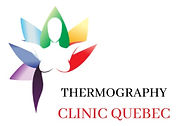
Breast Thermography - The Need for Follow Up
Breast Thermography is well known as a safe, non-radiation method of assessing a woman’s risk of breast cancer offering women the earliest possible warning that problems may be developing in her breasts. But, if thermography provides the earliest warning available, why is it so important to have a follow-up thermogram so soon after having the first test done... especially if the results are good?
A follow-up breast thermography may be useful for
four main reasons:
1. To establish a baseline.
Thermographic images of breasts are just like “thermal fingerprints”, and just like a fingerprint, it should stay relatively the same throughout your lifetime. The first examination done will be your baseline. All future examinations will be compared to this baseline which will give us a good indication of positive or negative changes that may be occurring in your breasts over time. The baseline examination will be rated as low, medium or high risk based on an internationally accepted “TH” or Thermographic scale of 1 to 5. Women with Low risk findings will be asked to return for re-examination in 9-12 months where high risk women will be asked to come back in 3-6 months.
2. To track the direction of your breast health.
Once your baseline is established, we are able to see which way you are heading with regards to risk of developing breast cancer. Three possible outcomes are possible: improvement, stability or higher risk than before. If the temperature difference between two points of reference becomes greater when compared to the baseline, it means that your breast health is not moving in the right direction. You might be asked to escalate to other structural tests, but even if these structural tests are negative, it will be important to take positive steps in preventing breast cancer, as abnormal or high risk findings with thermography is a very important factor in determining your future risk of developing breast cancer. Problem areas may simply be too small for other tests to detect at this very early stage. It takes 8-9 years of growth on the average for a tumor to be detected by a mammogram. However, studies have shown that a persistent abnormal thermogram carries with it a 22 times higher risk of future breast cancer. Once the level of risk is determined, women who are at higher risk are advised to be more careful and more vigilant with their own screening strategy.
3. To change a negative outcome.
It’s true; a picture can say a thousand words. If subsequent examinations show that a woman may be moving in the wrong direction, it may give her the incentive needed to finally make those life-style changes that can be a life saving, and encourage her to be more vigilant in having regular breast screenings. We have seen time and time again the success of women who have simply changed their diets, added exercise to their daily routines, and/or have had their hormones balanced.
4. To evaluate the effects of some therapies or interventions.
Thermography is an objective way to evaluate if therapies or life style changes are actually working to reduce risk. Many women today are using natural or bio-identical hormone therapy which is in many cases very beneficial to their health. However, our experience shows that not all women react the same way even to bio-identical hormone treatment. Different women often will have different reactions. Blood levels may show improvement, symptoms may subside or even disappear, but in some cases, a Thermographic examination will show that a woman’s breasts are responding in a negative way to these therapies. Breast Thermography provides us with an excellent method of tracking any changes that may be occurring in the breast tissue and metabolism in response to hormone treatments. Thermography can also track positive changes to reassure women and their healthcare practitioners that they are making the right choices.
It is always important to stay proactive and well informed in your own health care. In addition to your regular medical breast examinations, consider regular breast screening with Thermography, the results could change your life.

Alexander
Mostovoy,
DHMS, BCCT
Board Certified
Clinical
Thermographer

